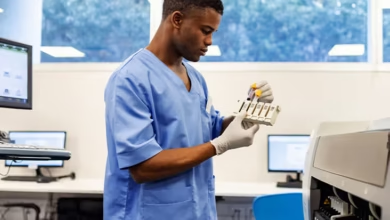Kidney Stones Symptoms: Recognizing the Silent Symptoms

Kidney Stones Symptoms, those pesky mineral and acid salt deposits that form in your kidneys, can cause a world of discomfort. While they may seem like a distant medical concern, understanding their symptoms can help you identify and address the issue early on. Let’s delve into the common signs and symptoms of kidney stones.
The Silent Culprit: Understanding Kidney Stones
Kidney Stones Symptoms are crystalline masses that develop within the urinary tract, primarily in the kidneys. These stones form when urine becomes concentrated, allowing minerals to crystallize and stick together. While they may remain small and asymptomatic, larger stones can obstruct the urinary tract, leading to severe pain and other complications.
Several factors can increase your risk of developing kidney stones, including:
- Family history: A genetic predisposition can make you more susceptible.
- Dehydration: Inadequate fluid intake can concentrate urine, promoting stone formation.
- Diet: A diet high in sodium, protein, or sugar can contribute to stone development. Specifically, excessive sodium intake can increase calcium excretion in urine, while high protein diets can elevate uric acid levels. Additionally, a diet rich in oxalate, found in foods like spinach, rhubarb, and chocolate, can contribute to calcium oxalate stone formation.
- Certain medical conditions: Conditions like hyperparathyroidism, gout, and cystinuria can increase the risk. Hyperparathyroidism, a disorder characterized by excessive parathyroid hormone production, can lead to increased calcium levels in the blood and urine, promoting stone formation. Gout, a type of arthritis caused by uric acid buildup, can lead to uric acid stones. Cystinuria, a genetic disorder, causes excessive cystine excretion in urine, leading to cystine stone formation.
- Certain medications: Some medications, such as diuretics and calcium-based antacids, may increase the risk. Diuretics can reduce urine volume, concentrating minerals and increasing the risk of stone formation. Calcium-based antacids can increase calcium levels in urine, especially when combined with high sodium intake.
Recognizing the Warning Signs

Kidney Stones Symptoms often present with distinctive symptoms. The most common symptom is severe, sharp pain in your back or side, often radiating to your lower abdomen or groin. This pain, known as renal colic, can be excruciating and may come in waves. It can worsen with movement, such as walking or lying down. The intensity and duration of the pain can vary depending on the size and location of the stone.
Other common symptoms associated with Kidney Stones Symptoms include:
- Painful urination: Passing urine may become painful or difficult, and you may experience a burning sensation. This is due to the irritation of the urinary tract by the stone or blood in the urine.
- Frequent urination: You may need to urinate more often than usual, especially at night. This can be caused by irritation of the bladder or ureters by the stone.
- Urgent need to urinate: You may feel a sudden, intense urge to urinate. This is often associated with bladder irritation.
- Pink, red, or brown urine: Blood in your urine, often a result of kidney stone damage to the urinary tract. This can range from microscopic blood, undetectable to the naked eye, to gross hematuria, where the urine appears visibly bloody.
- Cloudy or foul-smelling urine: This may indicate a urinary tract infection, which can sometimes occur alongside kidney stones. Bacteria can ascend the urinary tract and cause infection, especially when the flow of urine is obstructed by a stone.
- Nausea and vomiting: These symptoms may accompany severe pain, particularly during renal colic. The intense pain can trigger the body’s nausea and vomiting reflex.
- Fever and chills: These may indicate a kidney infection, a serious complication of kidney stones. A kidney infection, or pyelonephritis, occurs when bacteria reach the kidneys and cause inflammation.
When to Seek Medical Attention
If you experience any of these symptoms, it’s crucial to consult a healthcare provider promptly. Early diagnosis and treatment can help prevent complications and alleviate discomfort. Your doctor may perform various tests to diagnose kidney stones, such as:
- Urine analysis: To check for blood, crystals, or infection. A urine dipstick test can quickly detect blood and other abnormalities. A microscopic examination of the urine can identify crystals, red blood cells, and white blood cells, which can be indicative of Kidney Stones Symptoms or infection.
- Blood tests: To assess kidney function and electrolyte levels. Blood tests can measure kidney function, such as creatinine and blood urea nitrogen (BUN), and electrolyte levels, such as calcium, potassium, and sodium. These tests can help identify underlying conditions that may contribute to stone formation.
- Imaging tests: Such as X-rays, CT scans, or ultrasounds to visualize the stones. X-rays can detect calcium-containing stones, but they may not be sensitive enough to detect all types of stones. CT scans are more sensitive and can detect even small stones, as well as provide information about the location and size of the stones. Ultrasound is another imaging technique that can be used to visualize the kidneys and urinary tract, although it may not be as sensitive as CT scans for detecting small stones.
Treatment Options for Kidney Stones
The treatment for Kidney Stones Symptoms depends on several factors, including the size, location, and number of stones, as well as your overall health. Here are some common treatment options:
- Watchful waiting: For small stones, your doctor may recommend a wait-and-see approach, as they may pass spontaneously with increased fluid intake and pain medication. Small stones, typically less than 5 mm in size, have a higher chance of passing spontaneously with adequate hydration and pain relief.
- Medication: Pain relievers and medications to help relax the ureter and promote stone passage may be prescribed. Over-the-counter pain relievers, such as acetaminophen or ibuprofen, can help manage pain. Prescription pain medications may be necessary for severe pain. Alpha-blockers, such as tamsulosin or terazosin, can help relax the smooth muscle in the ureter, making it easier for the stone to pass.
- Shock wave lithotripsy (SWL): This procedure uses high-energy shock waves to break up stones into smaller fragments that can be passed more easily. SWL is a non-invasive procedure that is effective for treating Kidney Stones Symptoms located in the upper urinary tract. It involves delivering focused shock waves to the stone, breaking it into smaller pieces that can be passed in the urine.
- Ureteroscopy: A thin, flexible tube with a camera and specialized instruments is inserted into the urethra and bladder to reach the kidney stone. The stone can then be removed or broken up. Ureteroscopy is a minimally invasive procedure that allows direct visualization of the urinary tract and removal of the stone using various techniques, such as laser lithotripsy or basket retrieval.
- Percutaneous nephrolithotomy (PCNL): A small incision is made in your back to access the kidney and remove the stone. PCNL is a more invasive procedure that is typically reserved for large or complex stones that cannot be treated with other methods. It involves making a small incision in the back to access the kidney and remove the stone directly.
Preventing Kidney Stones: Lifestyle Modifications
While not always preventable, certain lifestyle changes can help reduce your risk of developing kidney stones:
- Stay hydrated: Drink plenty of water throughout the day to dilute urine and prevent stone formation. Aim to drink at least 2 liters of water per day, or more in hot climates or during increased physical activity.
- Watch your diet: Limit sodium intake, reduce consumption of animal protein, and consider a diet low in oxalate-rich foods like spinach, rhubarb, and chocolate. A low-sodium diet can help reduce calcium excretion in urine. Limiting animal protein intake can help reduce uric acid levels. A diet low in oxalate can help prevent calcium oxalate stone formation.
- Maintain a healthy weight: Obesity can increase the risk of kidney stones. Losing excess weight can help reduce the risk of stone formation.
- Regular exercise: Physical activity can help reduce the risk of kidney stones. Regular exercise, such as brisk walking or swimming, can help maintain a healthy weight and promote overall health, which may indirectly reduce the risk of kidney stones.
By understanding the symptoms and taking preventive measures, you can minimize your risk of experiencing the discomfort and complications associated with kidney stones. If you suspect you may have kidney stones, don’t hesitate to seek medical attention for proper diagnosis and treatment.



